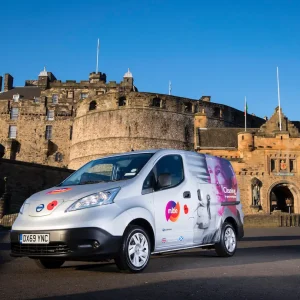Over the past year, there has been increased demand for businesses to be more environmentally friendly, especially as strict national lockdowns and reduced travel led to a significant drop in carbon emissions. And with the Government’s 2030 deadline banning the sale of new petrol and diesel vehicles also approaching, alongside reduced BIK tax rates, many are now wanting to make the move towards electric.
Considering this timeline and the higher upfront costs associated with electric vehicles (EV) and plug-in hybrids (PHEV), we are likely to see a shift towards more people opting for leasing models, instead of purchasing outright. Whilst EVs may be more expensive to purchase upfront, it is important to look at the whole life cost (WLC) of the vehicle, which is where we start to see the financial benefits of going electric. These benefits are further increased when combined with a company car scheme, which is why many fleet drivers are choosing to go electric via their employers.
However, not all companies are able to support the cost of mid-range electric vehicles within their company car allowance, and with the latest government cuts to plug-in grants lowering the price cap subsidy from £50k to £35k, drivers may now be more limited in their model choice.
But there is a way that businesses can offer their employees the electric vehicle they want, without it costing the business anything extra. This is through a WLC model and taking advantage of the tax efficiencies that come through trade-up schemes, such as salary sacrifice, or the more commonly used, private use contribution (PUC).
Private use contribution
When a driver is able to trade up by contributing towards their company car allowance, they will often pay the additional funds through a PUC. This is taken from an employee’s post-tax salary and enables them to move away from the more traditional and petrol vehicles, to go electric. Where the PUC is detailed as a condition of the car being available for the employee’s private use, comes the benefit of a reduction in BIK tax rates for the driver, while the business sees a reduction in National Insurance. However, the business will also experience a slight increase to corporation tax from PUC. Overall, the two fluctuations in tax balance out for the business and its original company car budget is maintained. It should be noted though that HMRC may not view the payment for the use of a more expensive car as qualifying for the BIK reduction and tax advice should be sought.
A trade up to an EV using PUC allows drivers to choose the vehicle they want, which keeps employees happy and comes at no extra cost for the wider business. In fact, the business could also benefit from its driver going electric, as this will positively contribute to its overall sustainability targets. However, there is an even more cost-efficient way for employees to trade up to an EV. For that, the best option is often through a salary sacrifice scheme.
Salary Sacrifice
Salary sacrifice is a concept that has been around for some time and is widely known and used in different forms of corporate mobility, such as cycle to work schemes or train season ticket loans. One of the most beneficial ways of using salary sacrifice, which is less widely known, is when an employee is looking at trading up to an EV.
A key benefit of using a salary sacrifice scheme is that the payment contribution is taken from an employee’s salary pre-tax, effectively reducing their overall salary and as such, lowering their personal tax rate – making it a more efficient approach.
Trading up to an EV this way allows drivers to have the more expensive electric vehicle they want, with the lower BIK rates from going electric, while also benefitting from a lower monthly contribution and a reduction on their income tax and National Insurance from a reduced salary. The business again experiences no additional costs using this method of trade up, and its original company car budget is maintained, while also benefitting from improved CO2 contributions. But through Salary Sacrifice, the business can help its drivers make substantially bigger savings across their vehicle contract than with PUC – often thousands of pounds over the course of the contract.
Additionally, any company that has previously used a cycle to work or alternative travel allowance scheme, can easily integrate this process into their systems, making it a simple switch.
There are many benefits from allowing employees to use trade up schemes, particularly as it helps companies maintain company car schemes, without the need to switch to a cash alternative. Whilst a PUC model has its positives, using a Salary Sacrifice scheme is the best way to save your employees money when trading up to an EV.
Through a salary sacrifice trade up scheme, combined with a pure electric or PHEV company car, employees are using their trade up contribution in the most tax efficient way and the benefits are clear; employees are essentially being provided a pay rise due to the substantial savings made and are able to go electric with the vehicle they want, at no extra cost to the business.
David Bushnell is principal consultant at Alphabet GB





